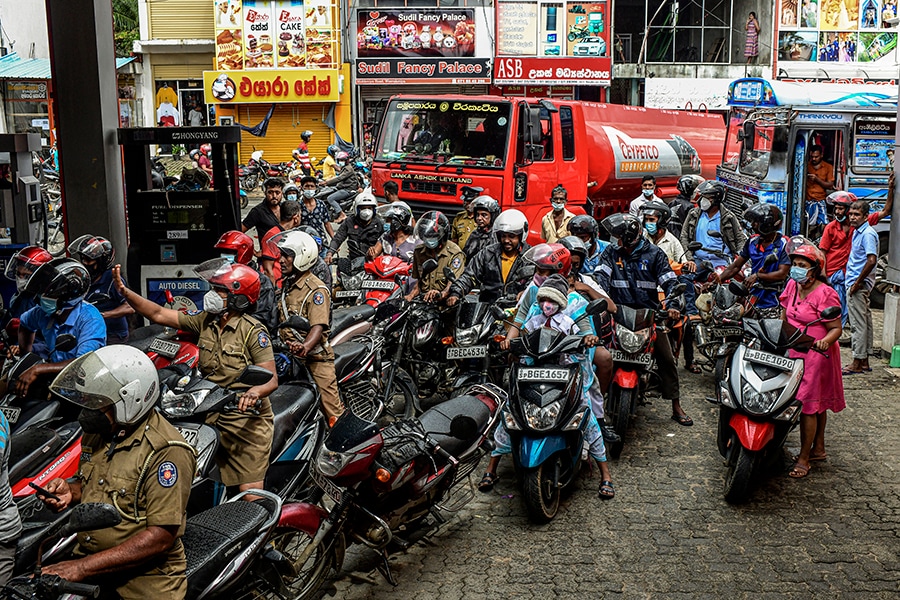
Lavish projects and meagre lives: The two faces of a ruined Sri Lanka
As Sri Lanka grapples with its worst-ever economic crisis, with people waiting hours for fuel and cutting back on food, nowhere is the reckless spending that helped wreck the country more visible than in Hambantota, the Rajapaksa family's home district in the south
 A line for gas at a station near the residence of Mahinda Rajapaksa, the former prime minister of Sri Lanka, in the town of Tangalle, May 18, 2022. A frenzy of building on borrowed money in the Rajapaksa family’s home district illustrates the hubris and mismanagement that led the country into economic collapse.
Image: Atul Loke/The New York Times
A line for gas at a station near the residence of Mahinda Rajapaksa, the former prime minister of Sri Lanka, in the town of Tangalle, May 18, 2022. A frenzy of building on borrowed money in the Rajapaksa family’s home district illustrates the hubris and mismanagement that led the country into economic collapse.
Image: Atul Loke/The New York Times
HAMBANTOTA, Sri Lanka — The international airport, built a decade ago in the name of Sri Lanka’s ruling Rajapaksa family, is devoid of passenger flights, its staff lingering idly in the cafe. The cricket stadium, also constructed on the family’s orders, has had only a few international matches and is so remote that arriving teams face the risk of wildlife attacks.
And then there is the port, the biggest of all the monuments to the Rajapaksas, a white elephant visited almost as much by actual elephants as by cargo ships before it was handed over to China in the face of impossible debt.
As Sri Lanka grapples with its worst-ever economic crisis, with people waiting hours for fuel and cutting back on food, nowhere is the reckless spending that helped wreck the country more visible than in Hambantota, the Rajapaksa family’s home district in the south.
This enormous waste — more than $1 billion spent on the port, $250 million on the airport, nearly $200 million on underused roads and bridges, and millions more (figures vary) on the cricket stadium — made Hambantota a throne to the vanity of a political dynasty that increasingly ran the country as a family business.
The frenzy of building on borrowed money, with little hope of immediate return on the investment, was in essence the payoff for the family’s triumphant declaration of victory in 2009 after a three-decade-long civil war against the Tamil Tigers, an insurgency that had taken up the cause of discrimination against the ethnic Tamil minority.
©2019 New York Times News Service




